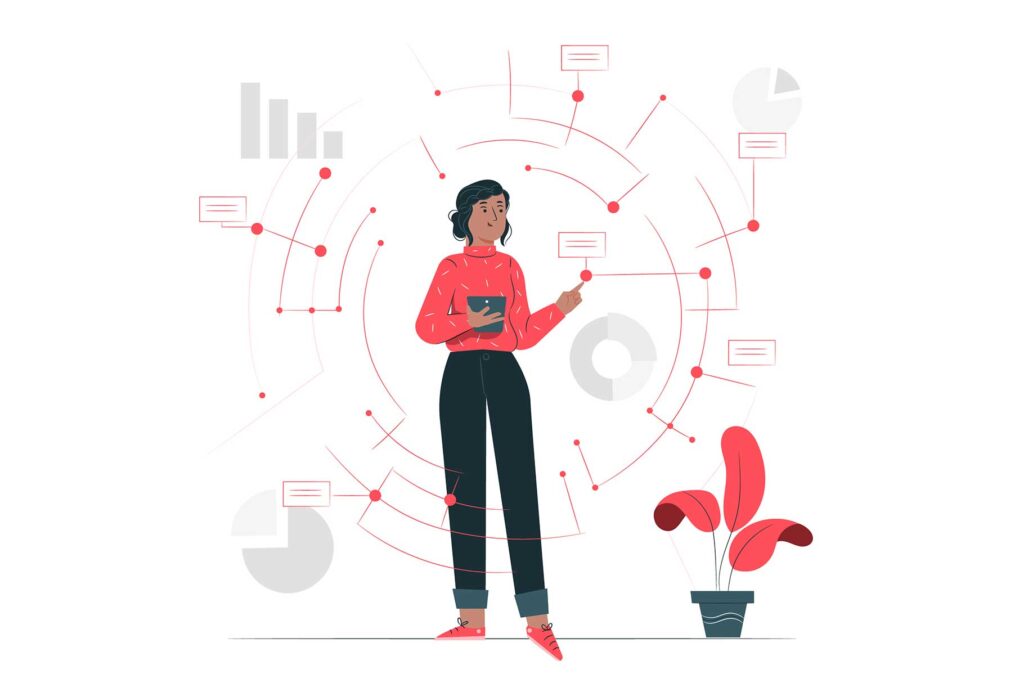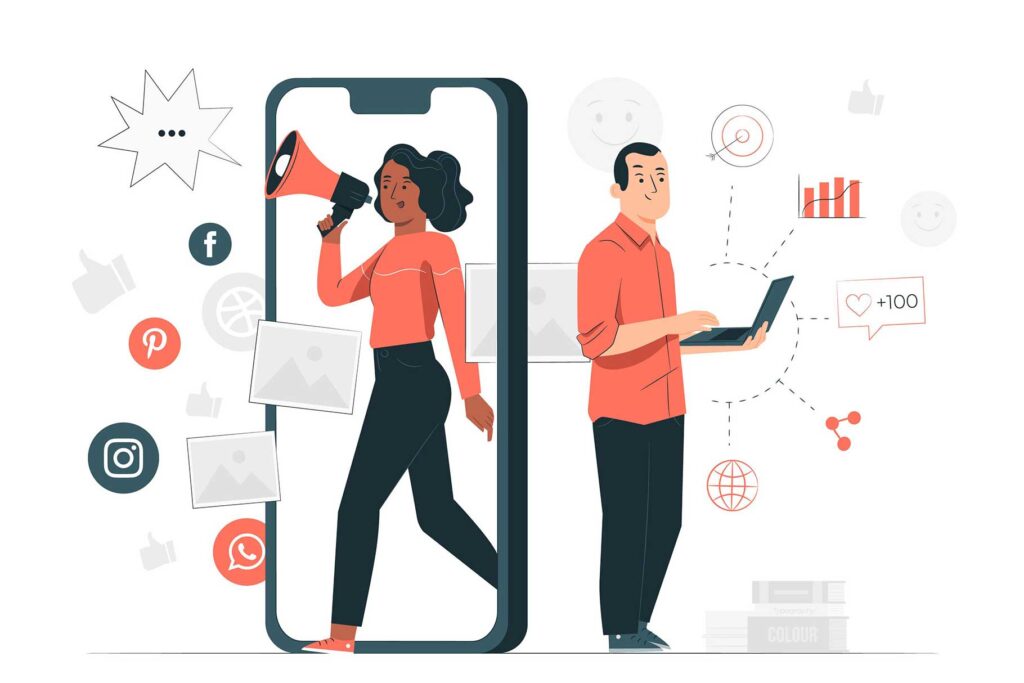Welcome to our comprehensive guide on “The Ethics of Graphic Design.” A designer’s responsibilities include considering how their work will be used when they create an identity, logo, or piece of packaging. In this in-depth guide, we’ll explore the ethical dimensions of graphic design.
Ethical issues can be complex, involving questions of authenticity and honesty. We’ll look at the intricacies of intellectual property law as it relates to cultural sensitivity.
We examine how designers can help foster inclusivity, promote social responsibility, and uphold environmental sustainability.
We look at the ethical implications of client relationships, digital design practices, and their impact on user experiences.
Through the lens of professional standards and industry codes, we aim to inspire designers to uphold ethical principles and promote positive change through their craft.
Join us for a discussion on the ethical landscape of graphic design, empowering designers and organizations to make informed decisions about how they approach their work.
Principles of Ethical Graphic Design

The principles of the ethical graphic design represent a core value for those who want to create meaningful and impactful visual communication without compromising their integrity or the respect that all stakeholders deserve.
The following are the principles of ethical graphic design:
1. Honesty and Transparency
Ethical graphic design is about honesty and transparency. Designers should not use deceptive tactics or misleading visuals when representing information, products, or services to their audience.
Designers can demonstrate integrity by creating honest designs that speak to people in an authentic way.
2. Respect for intellectual property
Another important principle is respect for intellectual property. Designers must carefully consider copyright laws and other policies when using visual assets like photographs or fonts in their designs.
Respecting intellectual property rights is not only the ethical thing to do; it also safeguards and promotes creativity.
3. Cultural sensitivity and inclusivity
Ethical graphic design is guided by cultural sensitivity and inclusivity. Designers should avoid stereotypes, cultural appropriation, or any form of discrimination in their visual representations.
A diverse group of people with varied perspectives and sensitivity to cultural issues is a good thing for design teams.
4. Environmental sustainability
Environmental sustainability is an important part of ethical graphic design. Designers should consider the environmental impact of their choices, such as opting for environmentally friendly materials or advocating sustainable production methods.
Designers can make a difference by incorporating sustainable practices into their work.
If graphic designers adhere to these principles, they can create visual content that meets both aesthetic and ethical standards.
Honesty, respect for intellectual property, inclusivity, and sustainability are core values of design firms that wish to be perceived as reputable.
By following these principles, designers can create a more ethical and impactful graphic design industry.
Ethical Considerations in Visual Representation

To ensure they are effective, visual representations must be designed with ethical concerns in mind. One important ethical consideration for designers is the accurate representation of subject matter without distorting or misrepresenting information.
Honest communication builds a bond of trust between designers and their audience, which is essential to the success of any visual project.
Designers should be mindful of the narratives they convey through their visuals, making sure that such messages align with ethical principles.
Storytelling can be used to manipulate or deceive an audience, but when done responsibly and ethically it can also inspire, inform, and foster positive connections with viewers.
Balancing art and ethics is a delicate balancing act; while designers are entitled to freedom of expression, they must still consider what the impact might be of their work.
Designers should ensure that their work respects the rights and dignity of all people, including those who have been historically oppressed. They must also be mindful not to reinforce social or cultural divides created by prejudice, intolerance, or discrimination.
Inclusivity and diversity should be considered essential ethical considerations in visual representation. Designers must strive to represent diverse perspectives, cultures, and identities. An inclusive design industry can challenge biases, empower underrepresented voices and contribute to a more equitable society.
With an appreciation of ethical principles in visual representation, graphic designers can create visuals that educate their audience and inspire respect.
When designers balance authenticity, responsible storytelling, and artistic expression with inclusivity and diversity, they can create a positive impact through their visual communication.
It is both a professional responsibility and an opportunity to shape a more inclusive, ethical design landscape when designers embrace their ethical responsibilities.
Also, read The Cultural Influences on Graphic Design (Secrets Unveiled)
Social Responsibility in Graphic Design

Graphic designers have the power to shape perceptions and inspire change.
The power of graphic design is a privilege that comes with the responsibility to use it for good. Graphic designers must leverage their skills and creativity in ways that foster positive social change, promote diversity, and encourage inclusivity.
A crucial element of social responsibility in graphic design is promoting diversity and representing individuals from different backgrounds and cultures. Designers who embrace inclusivity challenge stereotypes, foster a sense of belonging for all—and make the design industry more equitable.
Designers can address social issues and promote sustainability by advocating for causes they believe in, raising awareness—and inspiring action. Designers can leverage their creativity to address social and environmental issues, making meaningful contributions toward positive change.
By being mindful of cultural sensitivities and ensuring respectful representation, designers can help build an inclusive visual landscape.
Furthermore, ethical graphic designers consider the impact of their work on the environment. They strive to reduce waste, use sustainable materials and promote environmentally friendly design practices.
By making eco-friendly designs, designers can help protect the environment and lower their impact on it.
The fields of graphic design and social responsibility are inextricably linked. By promoting diversity, examining sensitive topics, avoiding harmful stereotypes, and embracing sustainability-oriented practices designers can help shape a more equitable future that is both empathetic to human needs while also being environmentally sustainable
Ethical Considerations in Client Relationships

For graphic designers, maintaining ethical integrity in client relationships is a matter of establishing clear boundaries and expectations at the outset. This ensures transparent communication channels that keep everyone aligned on ethical guidelines.
Balancing client desires with ethical responsibilities is a delicate process, since designers need to propose alternative solutions that uphold their professional integrity.
Designers also consider the potential impact of their work—they strive not only to create something beautiful but also to avoid misleading or harming people in any way.
Ethical designers are sensitive to cultural norms and the impact of their work on vulnerable populations. They also ensure that they treat all parties fairly in business dealings, offering transparency about pricing, legal contracts, and intellectual property rights.
By embracing ethical considerations in client relationships, designers can foster trust and build strong working partnerships.
Open communication, value alignment, impact assessment, and ethical business practices are part of cultivating strong relationships with clients.
Design for Social Impact

The design has the power to drive social change and create a positive impact on society. By embracing the concept of designing for social impact, designers recognize that their work can address pressing social issues—and improve lives.
Designing for social impact involves using design thinking and creativity to tackle complex issues in order to improve people’s lives. It requires understanding the needs of communities affected by these challenges.
Designers can create more meaningful solutions for their clients by understanding the needs of their target users.
Collaboration is one key aspect of designing for social impact. Designers often work closely with stakeholders — community members, nonprofits, and advocacy groups — to create products that are useful or enjoyable in the real world.
By including stakeholders in the design process, designers gain valuable insights and ensure that their solutions address a target audience’s needs. Social impact design requires a deep understanding of social, cultural, and environmental contexts in which interventions will be implemented.
Designers should consider the long-term sustainability and scalability of their solutions, as well as any unintended consequences.
Designers who make social impact a focus of their work have the potential to change lives for the better. Through the use of their skills, creativity, and empathy, designers can create change in society.
You may also like Impact of AI on Graphic Design: Better Than Human?
Ethical Design in the Digital Age

With the increasing reliance on digital devices, designers must carefully consider the ethical and social implications of their work.
To build user trust in digital products, designers must prioritize transparent data collection, storage, and usage—all while respecting users’ consent.
In order to create inclusive digital experiences, designers should adhere to standards for making content accessible (e.g., providing alternative text for visual content and ensuring compatibility with assistive technologies).
Ethical designers are conscious of the persuasive techniques employed in digital interfaces and strive to promote informed decision-making rather than exploit vulnerable users for personal gain.
The ethical design extends to environmental sustainability. Designers should minimize the impact on their environment by optimizing energy consumption, reducing electronic waste, and promoting sustainable design practices.
Through ethically designed digital experiences, designers create more inclusive and sustainable products that put users first.
Ethical Design in Advertising and Marketing

When it comes to advertising and marketing, the building of trust with consumers requires that messages be honest, transparent, and respectful.
When designing advertising and marketing, one aspect of ethical design is to avoid misleading or deceptive tactics. This means that visuals and messaging should accurately represent the product being advertised—NOT exaggerate claims about it!
It is essential for designers to respect and protect the privacy of consumers. Designers must handle their data ethically, obtain consent before collecting any information about them, and provide clear explanations about how that data will be used. This builds trust between the designer and the consumer, which is important for any business!
Ethical designers in advertising and marketing avoid perpetuating stereotypes, striving to represent diverse perspectives and identities through their visuals—and messaging.
In addition, responsible designers consider the social and environmental impact of their advertising campaigns. They aim to create content that aligns with ethical values—avoiding harm while contributing positively to society.
Ethical advertising and marketing practices help designers establish credibility, build positive relationships with consumers, and contribute to a more socially responsible ad industry.
Professional Ethics and Self-Regulation in Graphic Design

The graphic design industry relies on ethical practices among its members to ensure the integrity, accountability, and responsibility of all those involved.
By adhering to ethical principles and engaging in self-regulation, designers make the field of design more credible and professional.
One important aspect of professional ethics in graphic design is honesty and integrity. Designers should be transparent with clients, deliver work that aligns with ethical guidelines, and accurately represent their capabilities and qualifications.
Self-regulation means being a responsible professional who continually strives to improve his or her own skills, knowledge, and understanding of the field.
It is also important for designers to respect the intellectual property rights of others. Respecting intellectual property is crucial to preserving a culture of originality and creativity.
Professional ethics also include fair business practices. Designers should establish clear contracts and project timelines, honor their commitments, prioritize client confidentiality—and protect the privacy of sensitive information.
By adhering to professional ethics and self-regulation, graphic designers bolster the industry’s reputation and earn clients’ trust and respect from peers.
Integrity, respect for intellectual property, fairness in business practices, and continuous improvement of professional skills create a thriving design community.
Conclusion
In conclusion, the ethics of graphic design are extremely important. As designers, we have a responsibility to uphold ethical principles that guide our work and interactions with clients and audiences. In Learning Objectives for Chapter 1, we defined the principles of ethical graphic design and explored the multifaceted dimensions of ethical visual representation.
We can create visuals that inspire, inform, and respect our audience by prioritizing authenticity, responsible storytelling, and inclusivity. We partner with our clients to achieve their goals by communicating clearly, sharing mutual values, and acting ethically.
Ethical design practices help us contribute to a more inclusive, responsible, and impactful industry. Let’s strive to be ethical designers—shaping a better world through our visual creations!
Recommended reading: The Intersection of Graphic Design and Virtual Reality (Ultimate Guide)
FAQs
Q: Why are ethics important in graphic design?
A: Ethics are important in graphic design because they guide our moral and professional conduct. Ethical practices ensure that designers create responsibly, respect the rights and well-being of their audience, and contribute positively to society. Upholding ethical standards builds trust, credibility, and long-term relationships with clients and peers.
Q: How can graphic designers promote inclusivity through ethical design?
A: Graphic designers can promote inclusivity through ethical design by representing diverse perspectives, cultures, and identities. They should avoid stereotypes and engage in respectful representation. By embracing inclusivity, designers foster a sense of belonging and ensure that their visuals resonate with a wide range of audiences.
Q: What are some ethical considerations in the digital age for graphic designers?
A: In the digital age, graphic designers must consider user privacy and data protection. They should be transparent about data collection and usage, obtain consent, and prioritize cybersecurity. Designers should also ensure digital accessibility, minimize environmental impact, and promote responsible digital practices that avoid manipulative techniques and prioritize user well-being.
Q: How can graphic designers maintain ethical client relationships?
A: Graphic designers can maintain ethical client relationships by setting clear boundaries and expectations, fostering open communication, and ensuring transparency. They should balance client desires with ethical responsibilities and provide alternative solutions when necessary. Upholding fair business practices, respecting intellectual property rights, and maintaining client confidentiality also contribute to ethical client relationships.
Q: What role does social responsibility play in graphic design?
A: Social responsibility is integral to graphic design as it involves using design skills to address social issues, promote inclusivity, and advocate for positive change. Designers have the power to shape perceptions and contribute to societal discourse. By considering the social impact of their work, designers can create visuals that raise awareness, challenge stereotypes, and foster a more equitable and compassionate society.
2 thoughts on “The Ethics of Graphic Design (Complete Guide)”